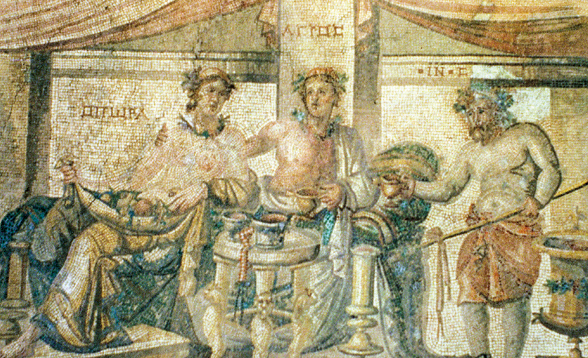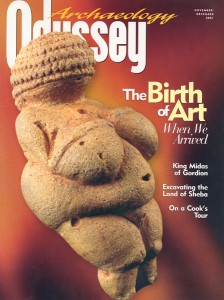Ancient Life: Roman Haute Cuisine
Fried flamingo, anyone?

Were the ancient Romans simply the Italian connoisseurs of their day? Were they fond of corn-meal polenta, roasted potatoes, egglant, and penne in tomato sauce, followed perhaps by a cup of thick, sweet espresso?
Nope. Not unless Roman ships did indeed cross the Atlantic, for these foods (except for the pasta, which arrived on the scene much later) all came from the New World.
What the Romans did eat is suggested by this third-century A.D. mosaic from Greco-Roman Antioch, on Turkey’s Mediterranean coast near the border with Syria. The mosaic, which once covered the floor of a dining room in Antioch’s House of the Boat of Psyche, depicts (from left to right) personifications of the Harvest (Opora) and Fields (Agros) enjoying the fruits of their labors while being served by Wine (Oinos).
The Romans cultivated various grains—barley, spelt (a variety of wheat), rye and millet—to make porridges and breads. They harvested grapes, apples, pears, pomegranates and plums. And they loved figs, which they mixed with sesame and fennel, rolled into balls, wrapped in fig leaves and then dried in the sun. Geese were even force-fed dried figs—so that their livers could be used to produce a Roman version of foie gras.
The Romans also ate their vegetables: especially carrots, asparagus, chickpeas, beets, cabbage, and rutabagas. The emperor Nero (37–68 A.D.) consumed leeks to keep his voice in shape, and his mother, Agrippina, is thought to have killed her husband, the emperor Claudius, by poisoning a tasty dish of mushrooms.
Already a library member? Log in here.
Institution user? Log in with your IP address.

